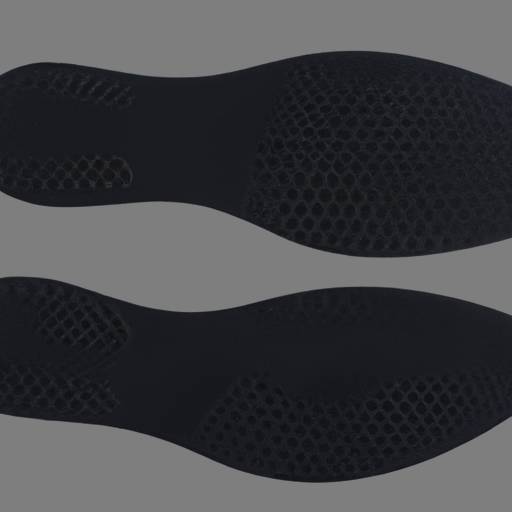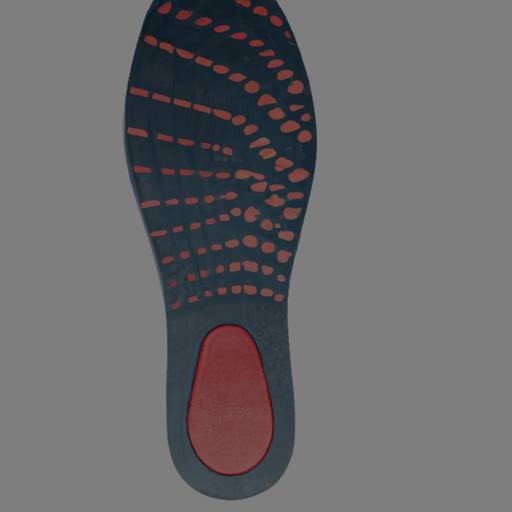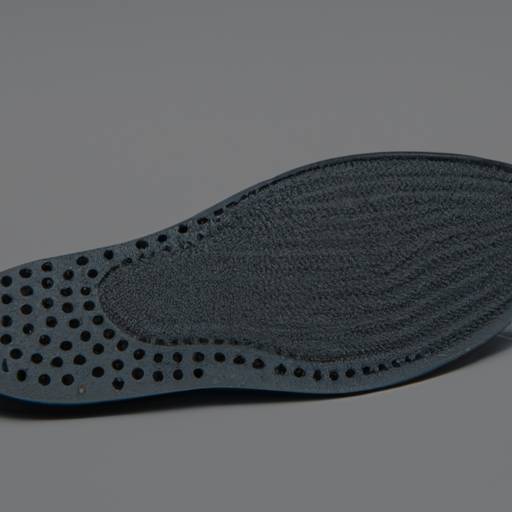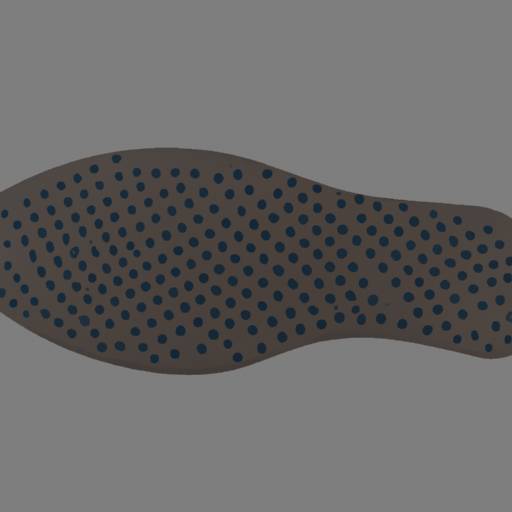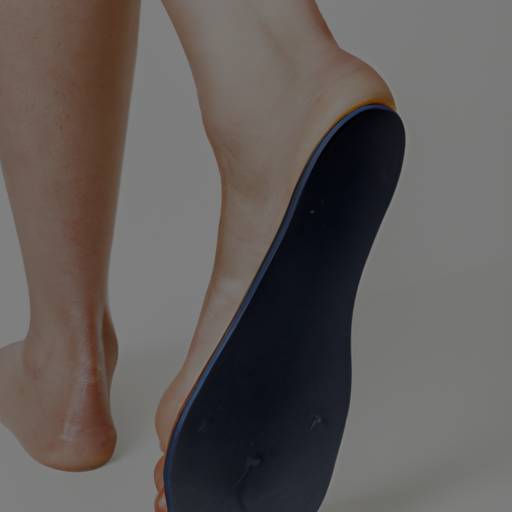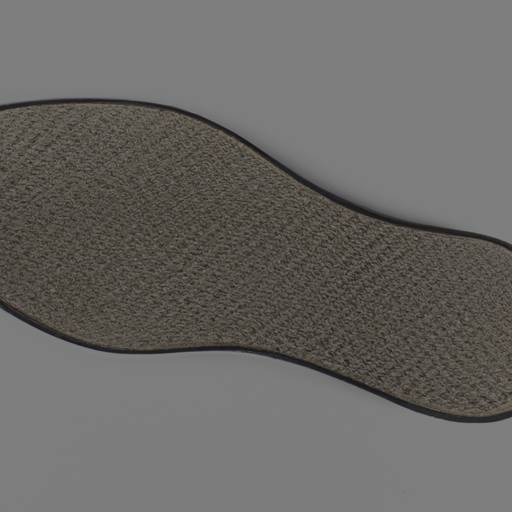Which Memory Foam Insole is Best for Arch Support?
The Importance of Arch Support
Proper arch support plays a vital role in maintaining healthy feet and overall foot health. The arches of our feet act as natural shock absorbers, helping to distribute body weight evenly and provide stability during walking, running, or standing. Understanding the role of arch support and the benefits it offers is essential for maintaining optimal foot health.
Understanding the Role of Arch Support
Arch support refers to the added structural support provided to the arches of the feet. The arches are made up of bones, tendons, ligaments, and muscles that work together to create a flexible and stable foundation for the feet. However, some individuals may have low or fallen arches (flat feet) or high arches, which can lead to imbalances and potential foot problems.
Arch support helps to address these imbalances by providing additional support to the arches, thereby aligning the feet properly. It helps distribute the weight evenly across the feet, reducing the strain on certain areas and preventing excessive pressure on the heels, ball of the foot, or toes.
Benefits of Proper Arch Support for Foot Health
Proper arch support offers several benefits for foot health:
- Pain Relief: Arch support can help alleviate foot pain caused by conditions such as plantar fasciitis, arch strain, or overpronation. It provides cushioning and stability, reducing discomfort and fatigue.
- Improved Stability: Arch support helps stabilize the feet and ankles, enhancing balance and reducing the risk of falls or injuries during physical activities.
- Prevention of Foot Problems: By providing proper alignment and support, arch support can help prevent various foot problems, including bunions, hammertoes, and shin splints.
- Enhanced Shock Absorption: The additional support provided by arch support helps absorb the impact of walking or running, reducing stress on the joints and minimizing the risk of injuries.
- Even Pressure Distribution: Arch support helps distribute body weight evenly across the feet, preventing excessive pressure on certain areas and reducing the likelihood of developing calluses, corns, or blisters.
When considering arch support, it’s important to note that everyone’s feet are unique, and the level of support needed may vary. Consulting a healthcare professional, such as a podiatrist or orthopedic specialist, can help determine the best course of action for your specific foot needs.
In the next section, we will explore the different types of memory foam insoles that provide arch support to help you make an informed choice. Remember, finding the right insole is essential for achieving optimal comfort and support for your feet.
Memory Foam Insoles for Arch Support
When it comes to finding the right insoles for arch support, memory foam insoles are a popular choice. Memory foam is a type of cushioning material that molds to the shape of your feet, providing personalized support and comfort. In this section, we will explore what memory foam is and how memory foam insoles specifically provide arch support.
What is Memory Foam?
Memory foam is a viscoelastic material that was originally developed by NASA for use in spacecraft seats to provide cushioning and pressure relief. This unique material is known for its ability to conform to the shape of an object under pressure and then return to its original shape once the pressure is released.
Memory foam is made from polyurethane, a type of polymer, and is infused with additional chemicals to enhance its viscoelastic properties. The result is a soft, supportive material that responds to body heat and pressure, allowing it to contour to the curves of your feet for a customized fit.
How Memory Foam Insoles Provide Arch Support
Memory foam insoles are designed with arch support in mind. The memory foam material used in these insoles compresses under the weight and heat of your feet, creating a mold that supports the natural arches of your feet. This helps to distribute your body weight more evenly across your feet, reducing pressure on specific areas and providing support where it’s needed most.
The arch support provided by memory foam insoles can help alleviate discomfort and pain associated with flat feet, fallen arches, and other foot conditions. By promoting proper alignment and reducing strain on the arches, memory foam insoles can help improve overall foot stability and prevent excessive pronation or supination.
It’s important to note that memory foam insoles come in different shapes and designs to accommodate various arch types and foot shapes. Some memory foam insoles offer full-length coverage, providing support from heel to toe, while others are 3/4-length, leaving room for toes to move freely. There are also arch support inserts with memory foam that can be added to your existing shoes for customized support.
When considering memory foam insoles for arch support, it’s essential to assess your specific arch support needs and foot shape. Additionally, factors such as cushioning, firmness, durability, and longevity should be taken into account. For more information on finding the right memory foam insole for you, refer to our section on Finding the Right Memory Foam Insole for You.
Memory foam insoles can be a comfortable and effective solution for individuals seeking arch support. However, it’s important to remember that different people may have different experiences and preferences when it comes to insoles. Trying out different options and consulting with a healthcare professional or podiatrist can help you find the best memory foam insole that suits your individual needs.
Types of Memory Foam Insoles for Arch Support
When it comes to choosing memory foam insoles for arch support, there are several options available to cater to individual needs. Let’s explore three common types of memory foam insoles that provide excellent arch support: full-length memory foam insoles, 3/4-length memory foam insoles, and arch support inserts with memory foam.
Full-Length Memory Foam Insoles
Full-length memory foam insoles are designed to provide support and cushioning for the entire foot. These insoles extend from the heel to the toe, offering consistent arch support throughout the length of the foot. They help to distribute the pressure evenly, reducing strain on the arch and promoting proper alignment.
With their comprehensive coverage, full-length memory foam insoles are suitable for individuals who require maximum arch support and cushioning. They are particularly beneficial for those with flat feet or high arches. The memory foam material molds to the shape of the foot, providing a customized fit and enhanced comfort.
3/4-Length Memory Foam Insoles
3/4-length memory foam insoles, also known as 3/4-length or three-quarter insoles, provide arch support from the heel to the ball of the foot. These insoles are designed to fit comfortably in most shoe styles without occupying the entire length of the shoe. They offer arch support while allowing more room in the toe area.
3/4-length memory foam insoles are versatile and suitable for various foot types, including those with neutral arches or mild arch issues. They provide targeted support to the arch while allowing the toes to move freely. These insoles can be easily transferred between different pairs of shoes, making them a convenient option for individuals who seek arch support on the go.
Arch Support Inserts with Memory Foam
Arch support inserts with memory foam are specialized insoles that specifically target the arch area. These inserts are designed to be placed inside the shoe, providing targeted support to the arch while preserving the natural cushioning of the heel and forefoot. They can be used in conjunction with existing insoles or replace them if necessary.
Arch support inserts with memory foam are suitable for individuals who require additional arch support without altering the overall fit of the shoe. They are available in various sizes and shapes to accommodate different foot types and shoe sizes. These inserts can be easily adjusted and repositioned to achieve the desired level of arch support and comfort.
When selecting the right memory foam insoles for arch support, it’s important to consider factors such as your arch type, foot shape, cushioning preferences, and the durability of the insoles. Trying out different options and assessing your specific arch support needs will help you find the best fit and improve your overall foot health. For more information on how to pick insoles that suit your needs, check out our article on how to pick insoles.
Factors to Consider
When selecting a memory foam insole for arch support, several factors come into play to ensure the best fit and comfort. Consider the following factors when making your decision:
Arch Type and Foot Shape
Understanding your arch type and foot shape is essential in finding the right memory foam insole for optimal arch support. The three main arch types are low arches (flat feet), normal arches, and high arches. Each arch type requires different levels of support and cushioning. Additionally, your foot shape, such as wide or narrow, can impact the fit and effectiveness of the insole. Taking these factors into account will help you choose an insole that aligns with your specific needs.
| Arch Type | Foot Shape | Recommended Insole |
|---|---|---|
| Low arches | Wide | Full-Length Memory Foam Insoles with Extra Arch Support and Cushioning |
| Normal arches | Wide or Narrow | Full-Length or 3/4-Length Memory Foam Insoles depending on desired coverage |
| High arches | Narrow | 3/4-Length Memory Foam Insoles with targeted arch support |
Cushioning and Firmness
The level of cushioning and firmness offered by memory foam insoles can greatly impact your comfort and support. Some individuals prefer a plush and cushioned feel, while others may require firmer support. Consider your personal preference and the level of cushioning needed for your foot condition. It’s important to strike a balance between cushioning and support to avoid excessive compression or lack of stability.
Durability and Longevity
When investing in memory foam insoles, it’s essential to consider their durability and longevity. Look for insoles made from high-quality materials that can withstand regular use and maintain their supportive properties over time. Additionally, consider the insole’s ability to resist moisture and odor, as these factors can affect the lifespan and overall hygiene of the insole.
By taking into account factors such as arch type, foot shape, cushioning and firmness preferences, and durability, you can make an informed decision when selecting the right memory foam insole for your arch support needs. Remember to assess your arch support needs, try different insoles to find the best fit, and consult with a healthcare professional if you have specific foot conditions or concerns.
Finding the Right Memory Foam Insole for You
When it comes to selecting the perfect memory foam insole for your arch support needs, it’s important to assess your specific requirements and try out different options to find the best fit. Here are two key steps to help you in your search:
Assessing Your Arch Support Needs
The first step in finding the right memory foam insole is to assess your arch support needs. This involves understanding your foot’s arch type and shape. There are generally three types of arches: low arches (flat feet), normal arches, and high arches. Each type requires different levels of support.
To determine your arch type, you can perform a simple wet footprint test. Wet the sole of your foot and step onto a piece of paper or a dark-colored surface. Examine the shape of your footprint to identify your arch type:
- Low arches (flat feet): If your footprint shows almost the entire sole of your foot with little to no curve on the inside, you likely have low arches.
- Normal arches: If your footprint shows a moderate curve on the inside with a distinct band connecting the heel and ball of the foot, you have normal arches.
- High arches: If your footprint shows a very narrow band connecting the heel and ball of the foot, with a significant curve on the inside, you have high arches.
Once you determine your arch type, you can look for memory foam insoles that provide the appropriate level of arch support. For example, individuals with low arches may benefit from insoles with rigid arch support, while those with high arches may require extra cushioning in the arch area. It’s important to find the right balance of support and comfort for your specific arch type.
Trying Different Insoles to Find the Best Fit
After assessing your arch support needs, the next step is to try out different memory foam insoles to find the best fit. Insoles come in various shapes, sizes, and levels of cushioning, so it’s essential to experiment and see which ones feel the most comfortable and supportive for your feet.
When trying out insoles, consider the following factors:
- Cushioning and Firmness: Look for insoles that offer adequate cushioning to absorb impact and provide comfort. The level of firmness should be suitable for your arch type and personal preference.
- Durability and Longevity: Choose insoles made from high-quality materials that can withstand regular use and provide long-lasting support. Look for insoles with good reviews and a reputation for durability.
- Proper Fit: Ensure that the insoles fit properly inside your shoes without causing discomfort or crowding. Insoles that are too large or too small may not provide the desired support or may cause discomfort.
Remember, it may take some trial and error to find the perfect memory foam insole for your arch support needs. Don’t be afraid to try different brands, styles, and sizes until you find the one that feels most comfortable and supportive for your feet.
By assessing your arch support needs and experimenting with different memory foam insoles, you can find the perfect match to provide the support and comfort your feet deserve. Keep in mind that everyone’s feet are unique, so what works for someone else may not necessarily work for you. Trust your own comfort and listen to your feet to guide your decision-making process.

